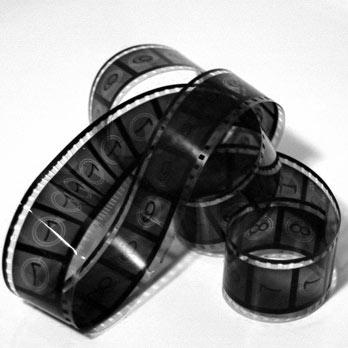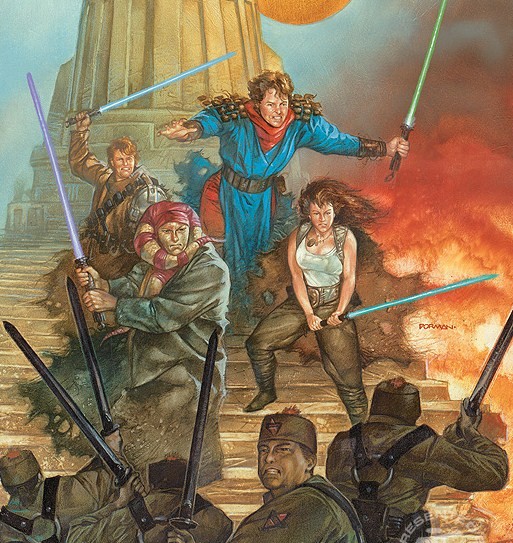Tags
Related Posts
Share This
Empire Enters the National Film Registry
Originally posted by Eric at TheForce.net (because I could not have written it better!):
The U.S. Library of Congress has given The Empire Strikes Back its final 30th birthday present, announcing today that it and twenty-four other films were going to be archived for the posterity of American culture in its National Film Registry.
Check out the press release below.
Hollywood Blockbusters, Independent Films and Shorts
Selected for Preservation in the 2010 National Film Registry
“All the President’s Men,†“The Exorcist,†and George Lucas’ Student Film Among Picks
The year 2010 will mark yet another December to remember in film preservation. Librarian of Congress James H. Billington today named 25 motion picturesâ€â€ÂHollywood classics, documentaries and innovative shorts reflecting genres from every era of American filmmakingâ€â€Âto the National Film Registry of the Library of Congress.
Spanning the period 1891-1996, the films named to the registry range from a rare glimpse of San Francisco before the 1906 earthquake and the political thriller “All the President’s Men†to George Lucas’ student film in 1967 and his sci-fi special-effects extravaganza “The Empire Strikes Back.†Also included in the registry are lesser-known, but culturally vital films such as the black independent film “Cry of Jazz,†Luis Valdez’s “I Am Joaquin†and John Huston’s war documentary “Let There Be Light,†which was banned by the War Department for 35 years. This year’s selections bring the number of films in the registry to 550.
Under the terms of the National Film Preservation Act, each year the Librarian of Congress names 25 films to the National Film Registry that are “culturally, historically or aesthetically†significant, to be preserved for all time. These films are not selected as the “best†American films of all time, but rather as works of enduring significance to American culture.
“As the nation’s repository of American creativity, the Library of Congressâ€â€Âwith the support of the U.S. Congressâ€â€Âmust ensure the preservation of America’s film patrimony,†said Billington. “The National Film Registry is a reminder to the nation that the preservation of our cinematic creativity must be a priority because about half of the films produced before 1950 and as much as 90 percent of those made before 1920 have been lost to future generations.â€ÂÂ
Annual selections to the registry are finalized by the Librarian after reviewing hundreds of titles nominated by the public (this year 2,112 films were nominated) and having extensive discussions with the distinguished members of the National Film Preservation Board, as well as the Library’s motion-picture staff. The Librarian urges the public to make nominations for next year’s registry at the Film Board’s website (www. loc.gov/film).
In other news about the National Film Registry, “These Amazing Shadows,†a documentary on the National Film Registry independently produced by Gravitas Docufilms, will premiere at the Sundance Film Festival in January 2011. More information can be found at the website (www.theseamazingshadows.com/).
For each title named to the registry, the Library of Congress Packard Campus for Audio Visual Conservation works to ensure that the film is preserved for future generations, either through the Library’s massive motion-picture preservation program or through collaborative ventures with other archives, motion-picture studios and independent filmmakers. The Packard Campus is a state-of-the-art facility where the nation’s library acquires, preserves and provides access to the world’s largest and most comprehensive collection of films, television programs, radio broadcasts and sound recordings (www.loc.gov/avconservation/) . It is funded as a gift to the nation by the Packard Humanities Institute and is home to more than six million collection items. The facility provides staff support for the Library of Congress National Film Preservation Board, the National Recording Preservation Board and the National Registries for film and recorded sound.
Founded in 1800, the Library of Congress is the nation’s oldest federal cultural institution. It seeks to spark imagination and creativity and to further human understanding and wisdom by providing access to knowledge through its magnificent collections, programs and exhibitions. Many of the Library’s rich resources can be accessed through its website at www.loc.gov and via interactive exhibitions on a personalized website at myLOC.gov.
Here’s the Library’s description of Empire:
The Empire Strikes Back (1980)
The much anticipated continuation of the “Star Wars†saga, Irvin Kershner’s 1980 sequel sustained the action-adventure and storytelling success of its predecessor and helped lay the foundation for one of the most commercially successful film series in American cinematic history.
As a reminder, Star Wars: Episode IV – A New Hope was inducted into the National Film Registry in 1989.
Well done to all involved in the making of The Empire Strikes Back — even in a world of countless digital copies stored everywhere, official preservation in the National Film Registry is a pretty big honor. As Empire‘s birthday celebration winds down, it’s fitting that the Library of Congress announce that it is of “enduring significance to American culture.”











